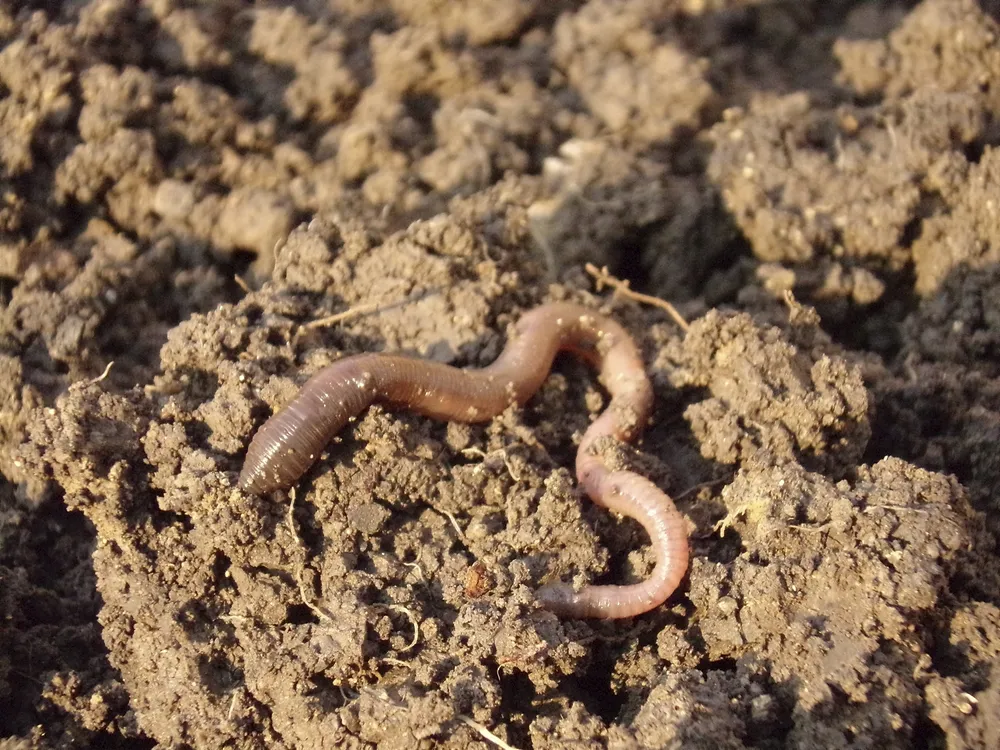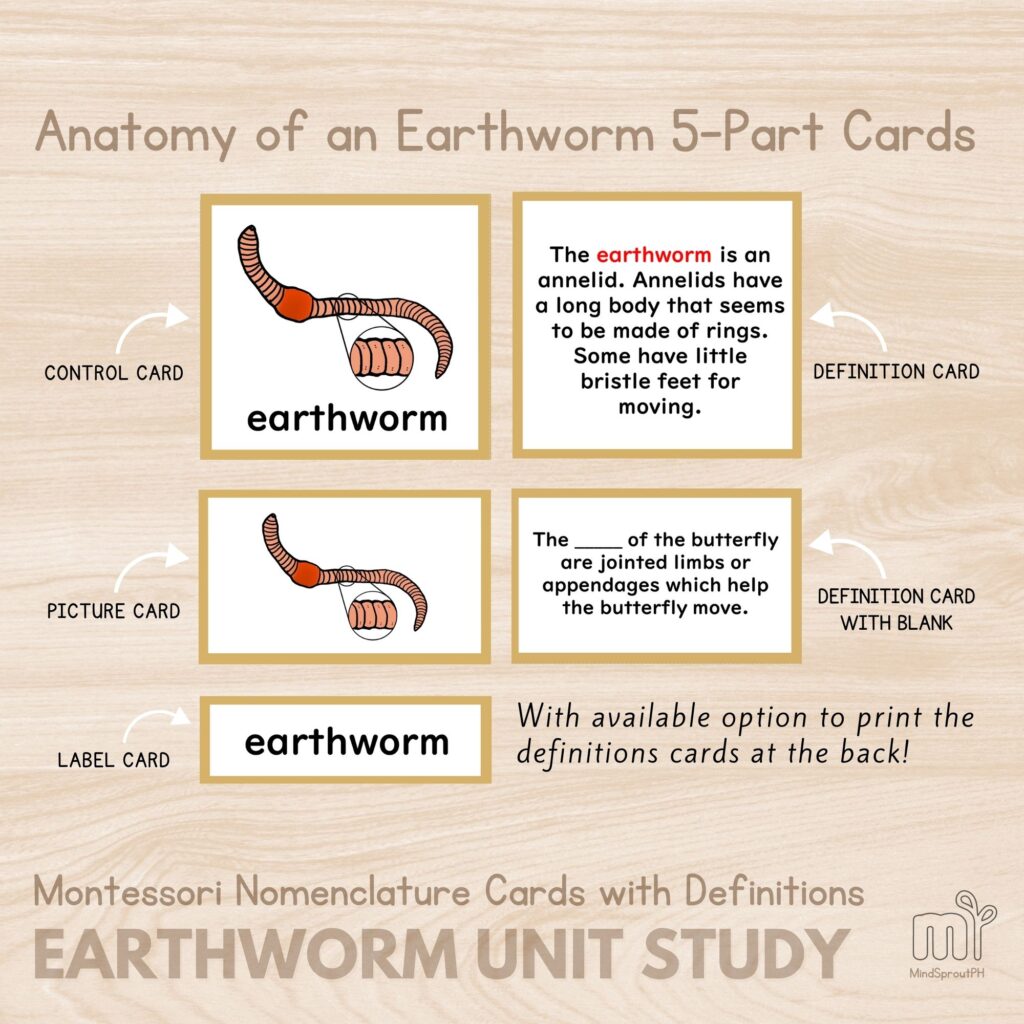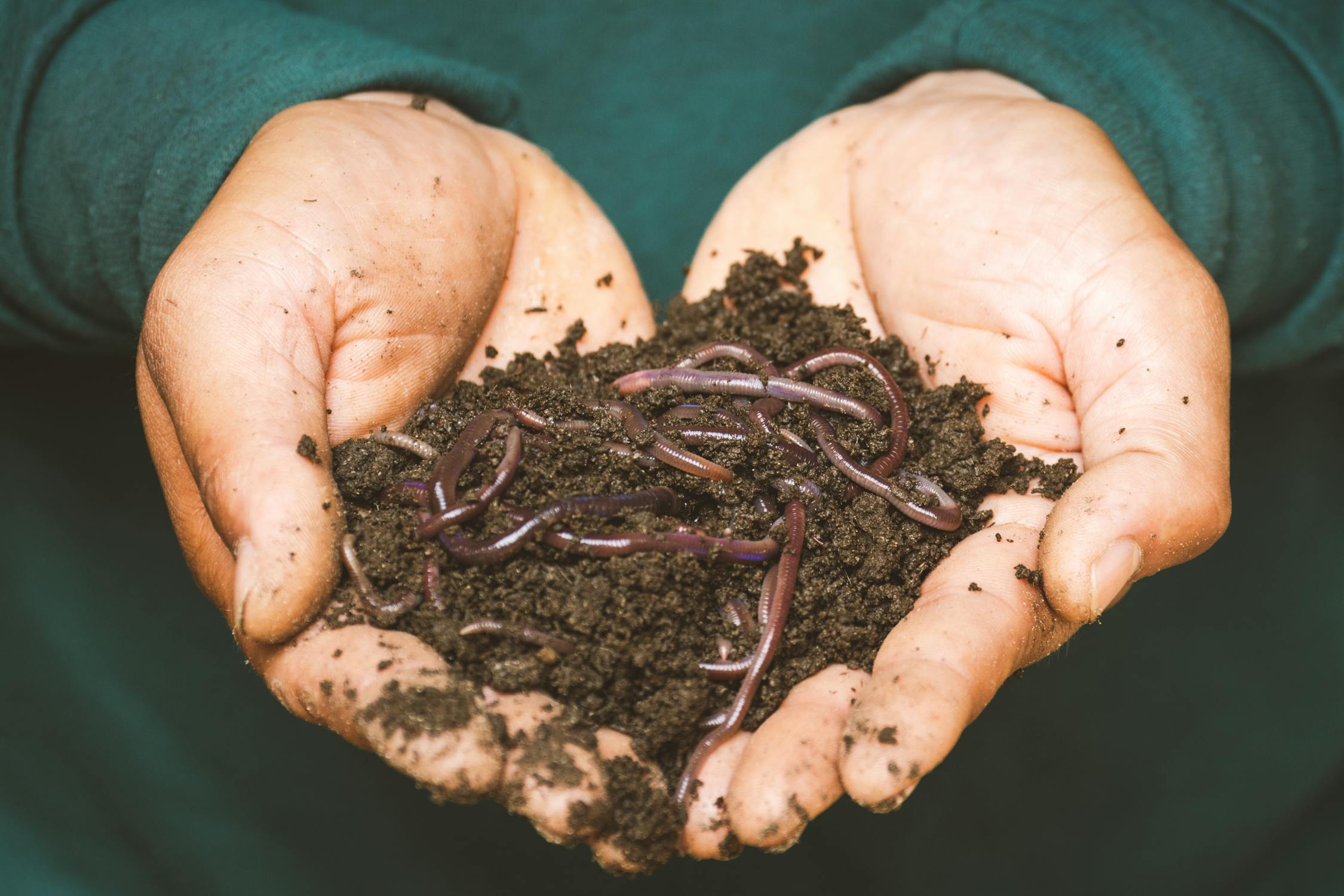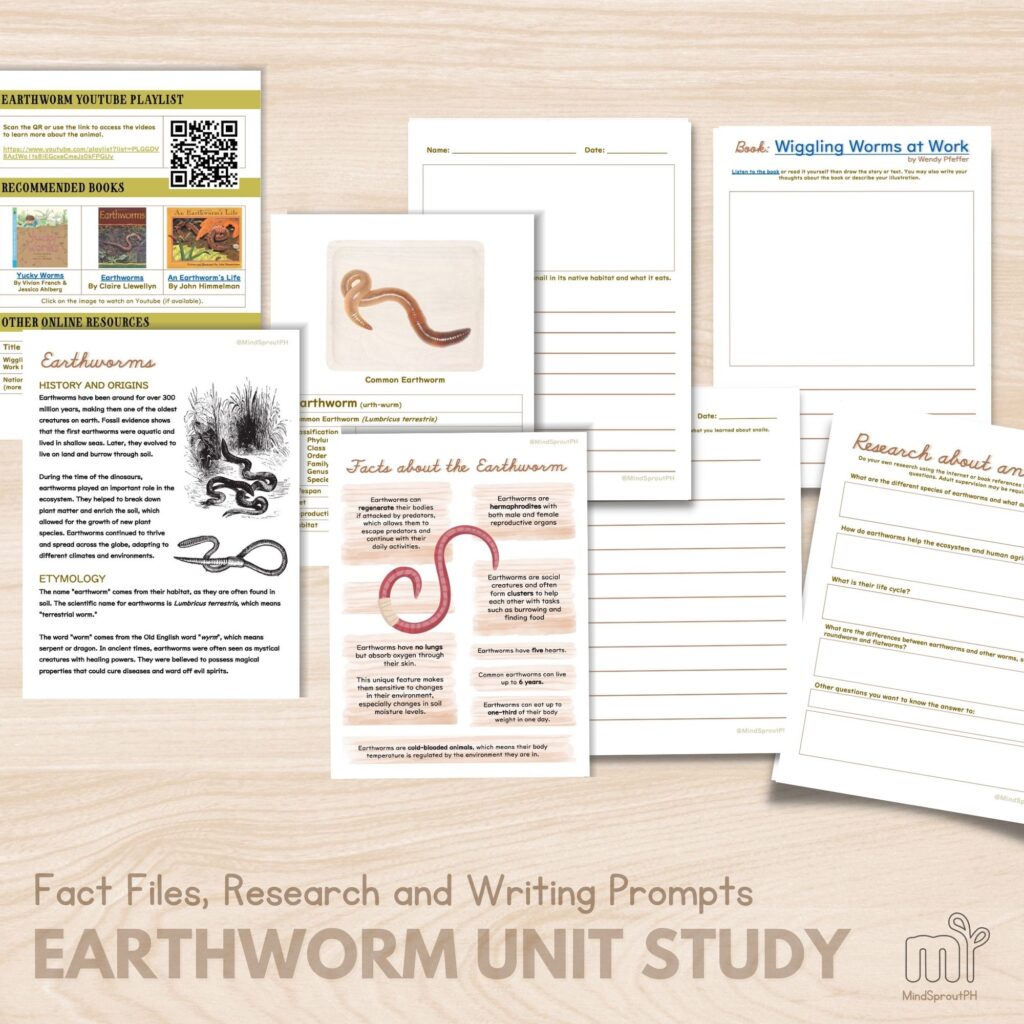Earthworms are fascinating creatures that play an important role in our ecosystem. Often overlooked, these creatures have a rich history and cultural significance, unique features and habits, and a vital role in creating healthy soil. This post provides a comprehensive guide on earthworms, including their diet, habitat, special features, fun facts, pet guide, and life cycle.
Origins of Earthworms
Earthworms have been around for over 300 million years, making them one of the oldest creatures on Earth. Fossil evidence shows that the first earthworms were aquatic and lived in shallow seas. Later, they evolved to live on land and burrow through soil. During the time of the dinosaurs, earthworms played an important role in the ecosystem. They helped to break down plant matter and enrich the soil, which allowed for the growth of new plant species. Earthworms continued to thrive and spread across the globe, adapting to different climates and environments.

The name “earthworm” comes from their habitat, as they are often found in soil. The scientific name for earthworms is Lumbricus terrestris, which means “terrestrial worm.” The word “worm” comes from the Old English word “wyrm”, which means serpent or dragon. In ancient times, earthworms were often seen as mystical creatures with healing powers. They were believed to possess magical properties that could cure diseases and ward off evil spirits.
Anatomy of an Earthworm
Earthworms have a unique anatomy that helps them survive in their environments.

- The earthworm’s body is divided into several segments, each with its own set of muscles and nerves. The segments are covered in tiny bristles called setae, which help the earthworm move through the soil.
- The head of an earthworm contains the mouth and sensory organs, such as light-sensitive cells and touch receptors.
- The earthworm also has a clitellum, which is a thickened band of tissue that produces a cocoon for the eggs during reproductive activity.
- The earthworm’s digestive system consists of a mouth, pharynx, esophagus, crop, gizzard, intestine, and anus.
- The circulatory system includes five pairs of hearts that pump blood through the body.
- The excretory system includes nephridia, which are specialized organs that filter waste from the blood and release it as urine.
- Earthworms also have a respiratory system that allows them to absorb oxygen through their skin.

Habitat of Earthworms
Earthworms are found all over the world, living in a wide range of habitats such as gardens, fields, forests, and even deserts. They prefer moist environments and can be found in soil, leaf litter, and other organic matter. Earthworms help to create healthy soil that is essential for plant growth and is crucial for the survival of many living organisms. Earthworms are also important for the ecosystem as they help to cycle nutrients and improve soil structure. They aerate the soil, which allows for better water absorption and plant growth.

Diet of Earthworms
Earthworms are detritivores, which means they feed on decaying organic matter such as dead leaves, plants, and animal remains. They are also soil engineers that help to break down organic matter and create nutrient-rich soil. Earthworms eat their way through the soil, digesting and excreting it to create healthy soil. They are beneficial to the soil as they break down the organic matter and make the soil richer in nutrients. The process of breaking down organic matter also helps to aerate the soil, which allows for better water absorption and plant growth.

Life Cycle of Earthworms
Earthworms have both male and female reproductive organs and mate by pressing their bodies together and exchanging sperm. They create a cocoon after mating that holds several eggs. Baby earthworms hatch from this cocoon as miniature versions of their parents. It takes about 3 to 4 months for baby earthworms to mature and start reproducing. Earthworms are significant to the ecosystem, and their life cycle is vital to the soil’s health.
Earthworm Pet Guide
Do you know that earthworms can be great pets? They don’t need much attention and can be kept in a container with soil and a few small pieces of organic matter. Just make sure the environment is moist and feed them regularly with fruit and vegetable scraps. Earthworms are also good for composting and vermicomposting, which creates healthy soil for your plants.
Finding Earthworms
To find earthworms, check under rocks or logs, in compost piles or leaf litter, in soil rich in organic matter, near bodies of water like streams or ponds, or in areas that have been recently disturbed like tilled fields or construction sites. Be gentle with earthworms and return them to their habitat after observing them.

Tips for Taking Care of Earthworms
- Be gentle and avoid squeezing or pulling them when handling.
- Wash your hands before and after handling earthworms.
- Earthworms do not need water, but they need to be in a moist environment to stay hydrated.
- They can survive in a variety of temperatures, but it’s best to keep them in a cool area not in direct sunlight or extreme heat.
- Provide a clean environment.
- Feed them regularly with fruit and vegetable scraps, but avoid feeding them citrus fruits or anything too acidic.
- Use a container made of plastic or glass that has good ventilation and movement.
- Fill the container with moist soil and organic matter, such as leaves or vegetable scraps.
- Avoid using soil from outside because it may contain harmful chemicals or parasites.
- Supervise children when handling earthworms and teach them how to handle the worms gently to avoid injury.
- Be aware of any signs of an allergic reaction, such as skin irritation or respiratory issues.
Fun Facts about Earthworms
- Earthworms can regenerate their bodies if attacked by predators, which allows them to escape predators and continue with their daily activities.
- Earthworms have no lungs but absorb oxygen through their skin. This unique feature makes them sensitive to changes in their environment, especially changes in soil moisture levels.
- Earthworms are hermaphrodites with both male and female reproductive organs
- Earthworms are social creatures and often form clusters to help each other with tasks such as burrowing and finding food
- Earthworms have five hearts.
- Common earthworms can live up to 6 years.
- Earthworms are cold-blooded animals, which means their body temperature is regulated by the environment they are in.

Book Recommendations about Snails
If you’re looking for a book about earthworms for kids, we recommend “Wiggling Worms at Work” by Wendy Pfeffer. This book explains the important role that earthworms play in the ecosystem and how they help to create healthy soil. It also includes fun facts and illustrations that will engage young readers.
Here are three more book recommendations for kids to learn about earthworms:
- “Yucky Worms” by Vivian French
- “Earthworms” by Claire Llewellyn
- “An Earthworm’s Life” by John Himmelman
- “Curious About Worms” by Kate Waters
Find more books and other products to learn more about snails on our Amazon storefront here.
Supplemental Activity Sheets
Our Earthworm unit study includes a wide variety of activities to keep kids engaged and excited about learning.

From line tracing practice sheets to coloring pages, from counting clip cards to a word search game, we’ve got it covered with our interactive resources for preschoolers. Kids can practice their letter recognition and tracing, as well as their number counting and graphing skills. We’ve also included a pet guide for earthworms, so kids can learn how to care for these creatures and even keep them as pets themselves.

But that’s not all – our Earthworm Unit Study goes beyond just basic activities. We’ve included informative resources about the animal’s history and origins, etymology, diet, habitat, and more. Kids can learn about the different parts of an earthworm, including a poster with blanks and 5-part cards. We’ve also included writing prompts, research prompts, and a book-based prompt to encourage kids to explore even more about earthworms.

This is something you’ll get to use for years or for multiple kids of different ages!
What’s Inside the Earthworm Unit Study
49-page PDF file with the following:
– Line Tracing Practice Sheets
– Pin Poking Sheet
– Letter Recognition Dot Coloring
– Letter Tracing / Writing Sheet
– Number Counting and Tracing Sheets
– Counting 2 Different Objects
– Counting 5 Different Objects & Graphing
– Counting Clip Cards
– Word Search
– Bingo Game
– Coloring Page
– Life Cycle Poster
– Life Cycle Activities
– Word Definitions List
– Animal Classification & Basic Characteristic Page
– Informative Nuggets about the animal’s History and origins, Etymology, Diet, Habitat, and more.
– Facts about the Earthworm
– Word Sorter
– Pet Guide for Earthworms
– Parts of an Earthworm (Poster with Blanks)
– Parts of an Earthworm (5-part cards)
– Writing Prompts
– Research Prompts
– Book-based Prompt
– Link to the unit playlist of books and other resources
If you’re interested in getting only the activity sheets for either the younger kids or older kids, proceed through these links: Preschool | Elementary
FAQs
To help you with preparing these or to help you with your queries, kindly check our FAQs page.


